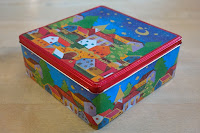The bricks you can see, on the outside of the pile, all look fairly similar shaped, but perhaps there are some awkwardly shaped stones in the middle of the pile that you can't see which would make the work take longer.
Variables and assumptions
 If the work is done outdoors, the weather could be an influence. If it is a hot day, or a rainy one, that could make the work take longer. Or perhaps the work is to be done at night. Is there any lighting you can use then? What about other tools? Who will perform this work? Will it be a single person, or a team? Are they experienced in this type of work? If it's a team, have they worked together before on a similar job? Are they in good shape, do they have the stamina to perform this kind of physical duty?
If the work is done outdoors, the weather could be an influence. If it is a hot day, or a rainy one, that could make the work take longer. Or perhaps the work is to be done at night. Is there any lighting you can use then? What about other tools? Who will perform this work? Will it be a single person, or a team? Are they experienced in this type of work? If it's a team, have they worked together before on a similar job? Are they in good shape, do they have the stamina to perform this kind of physical duty?If you have never estimated this kind of work before, your first estimate will likely be a very rough guess with a lot of padding on both sides. If you have done this before, you can probably make a better estimate.
Estimating software
Estimating software is much like this. There are often many unknowns and it is hard to come up with a good estimate. This is where story points come in.
 Suppose there are multiple piles of bricks that have to be stacked. While you still don't know how much time each single pile will take to stack, you can assign a number of "story points" to each one. You could assign one point to the smallest pile of stones, two points to each pile that looks about twice the size of the smallest one, etcetera. You are sizing the chunks of work relatively to each other.
Suppose there are multiple piles of bricks that have to be stacked. While you still don't know how much time each single pile will take to stack, you can assign a number of "story points" to each one. You could assign one point to the smallest pile of stones, two points to each pile that looks about twice the size of the smallest one, etcetera. You are sizing the chunks of work relatively to each other.Then, you would do the work on the most important, most valuable, pile of bricks and measure the time it takes to perform the job. Suppose you estimated your first pile as two story points and it took you eight hours. If the total number of story points of the remaining pile is, for example, ten story points, it would mean it might take roughly another forty hours to stack all the remaining piles of bricks.
However, don't stop there. Every time a pile of bricks is finished, update the measurement to get a more precise estimate on when it will be done. This is called velocity.
Velocity
 In Scrum, at the end of each sprint the number of story points for finished stories is counted. Over time this will give a decent indication of how much work can be performed during a sprint. Usually it will take three or four sprints for the velocity to become meaningful. This can then be used to estimate how long the remainder of a release or project will approximately take.
In Scrum, at the end of each sprint the number of story points for finished stories is counted. Over time this will give a decent indication of how much work can be performed during a sprint. Usually it will take three or four sprints for the velocity to become meaningful. This can then be used to estimate how long the remainder of a release or project will approximately take.Even when using story points you cannot perfectly predict beforehand how long a release or project will take. However, it will allow you to adjust your plans during the release or project based on actual data, rather than on wishful thinking.







